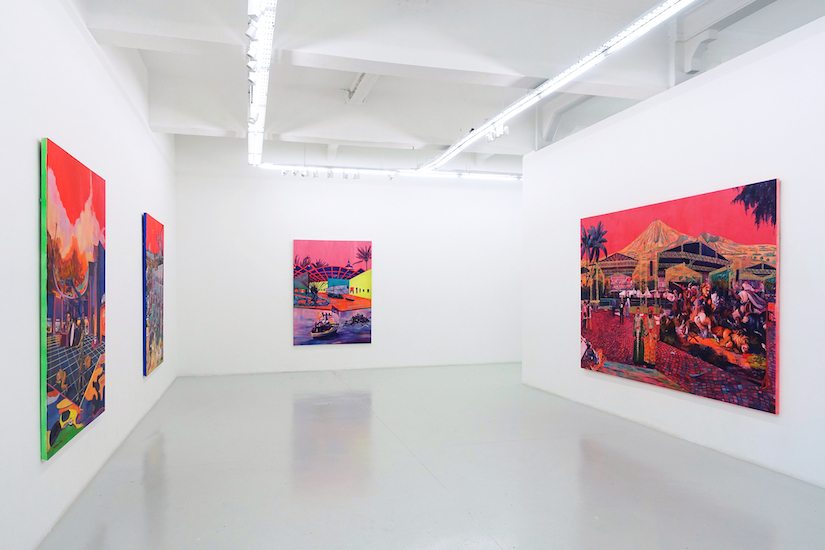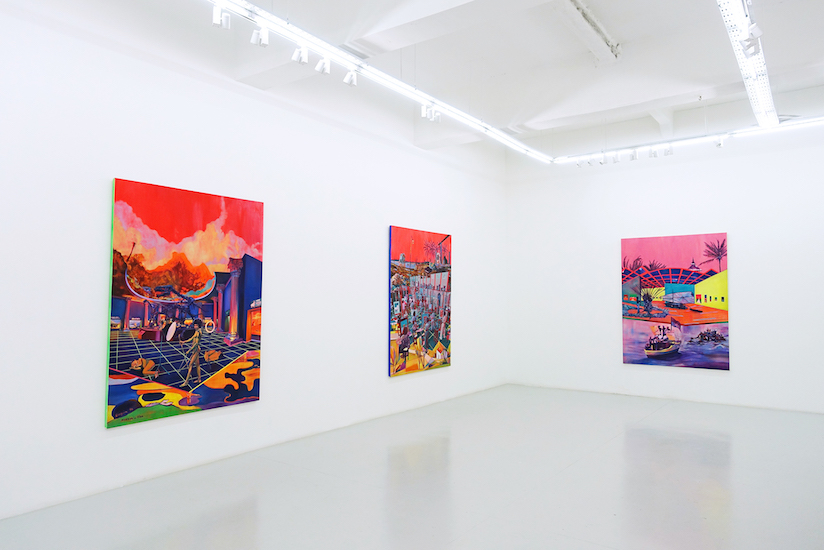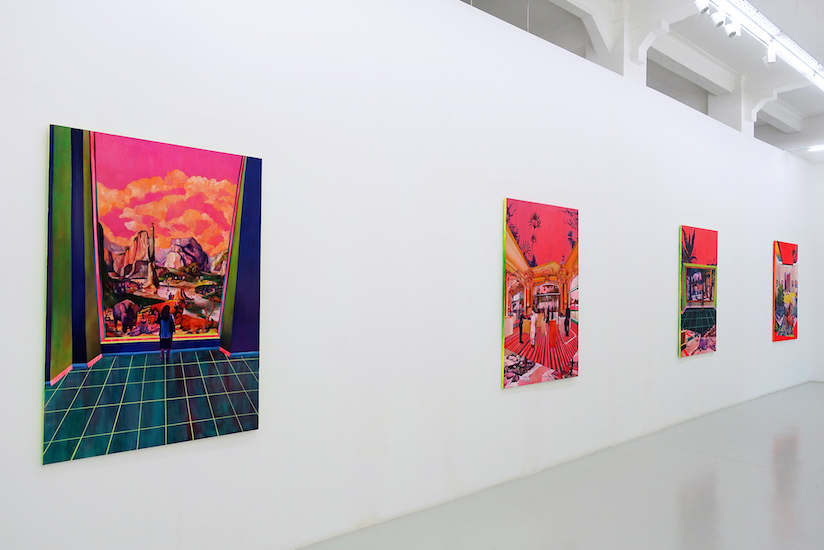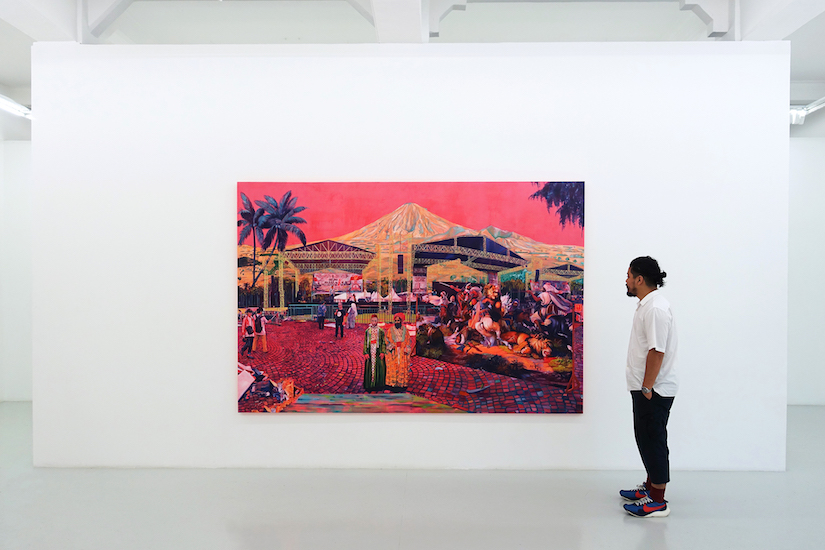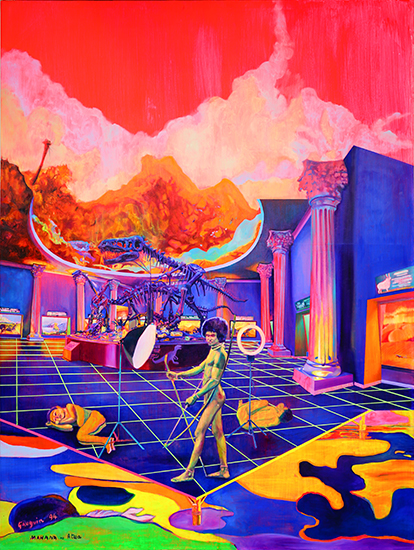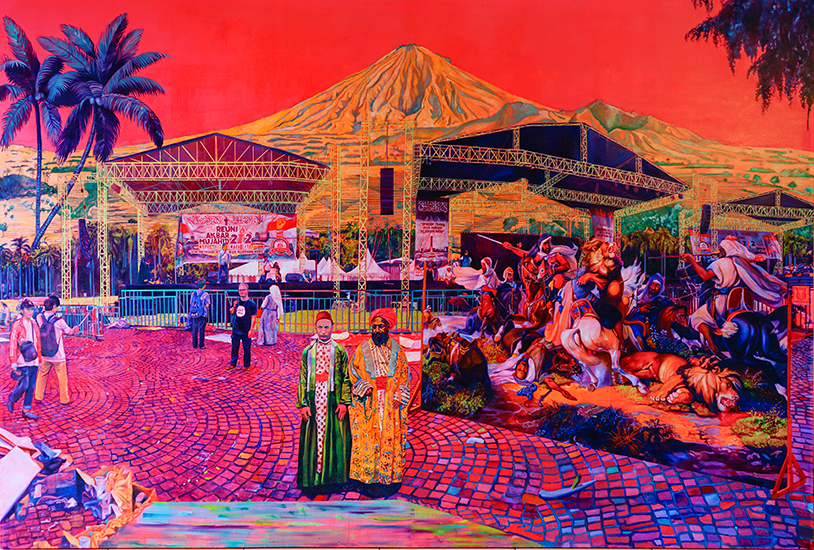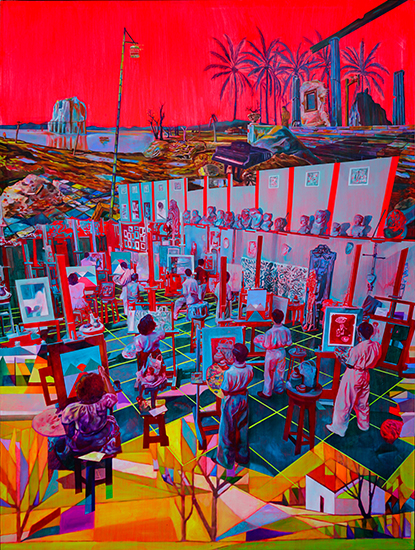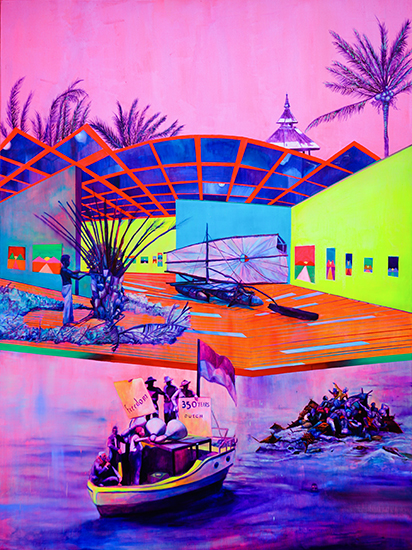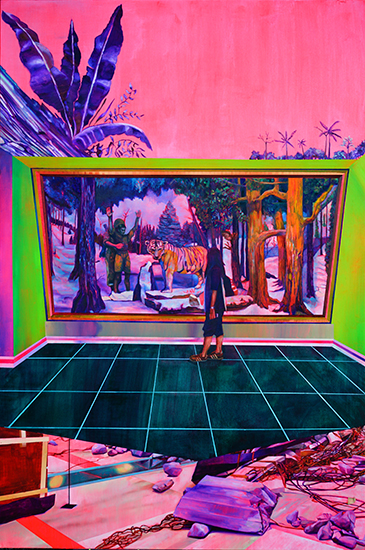Yavuz Gallery is proud to present Indonesian-artist Zico Albaiquni in his first solo exhibition in Singapore. Entitled Nostalgic Utopia, the show comprises of paintings in the artist’s characteristic vibrant and multicoloured style that play with aspects of art history and painterly representation.
Albaiquni is known for his complex investigations into the genre of painting and the roles of a painter. He deconstructs the medium, particularly by analysing how Indonesia’s landscape and ideas of the country have been represented and conceptualised at various time periods. In his paintings Albaiquni interweaves numerous icons and motifs, drawing together works by a wide-ranging group of seminal artists and settings – interplaying with different contexts and modes in which art circulates. Some of his references include: the Mooi Indie (‘beautiful Indies’) tradition, pioneering Romantic painter Raden Saleh, Social Realist painter S. Sudjojono, contemporary works by Thomas Hirschhorn, and museum dioramas and exhibition settings. Albaiquni’s works also challenge conventional painting perspectives and formats, utilising trompe l’oeil illusions and disrupting the rectangular borders of the canvas.
In Nostalgic Utopia, Albaiquni expands upon these trajectories while taking cue from the current socio-political culture in Indonesia. In the drum up to the 2019 general elections, various communities have been harking back to imagined, idealised versions of Indonesia, through particular historical figures and icons in nationalistic rallies. To the artist, this imagery used echoes the Mooi Indie tradition, as it similarly presents a romanticised and utopian idea of Indonesian landscape and its people. Drawing upon numerous contemporary and historical narratives, Albaiquni explores unexpected juxtapositions in these suite of eight paintings; blending disparate elements to explore the similarities between colonial and post-war representations with recent developments in nationalistic campaigns, alongside broader ideas on the relationship between the artist, artwork, the viewer and art history.
These ideas are exemplified in the piece A Survival Guide to Imagining of What Wasn’t Was, where Albaiquni depicts Christiaan Snouck Hurgronje, a controversial Dutch scholar and advisor in the Dutch East Indies, alongside Saleh’s 1841 painting Lion Hunt, posters used in the 212 Movement, and a background of idyllic palm trees and mountains that typify Mooi Indie landscapes. Taken together, the work presents the multiple narratives that surround how the image of Indonesia has been represented in the past and present, while playing with literal perspectives by warping and intersecting the painting’s picture plane. In Laboratorium Barat (‘Western Laboratory’), Albaiquni turns inwards and examines how the artistic practice has been taught in the country, by depicting a setting of students in the studio of his alma mater, with a backdrop featuring motifs by artists S. Sudjojono and Ries Mulder.
In his multi-layered paintings that experiment with various genres and iconography, Albaiquni considers the function of art in the past, and the endless ways that art histories can be read to develop art for the future.
